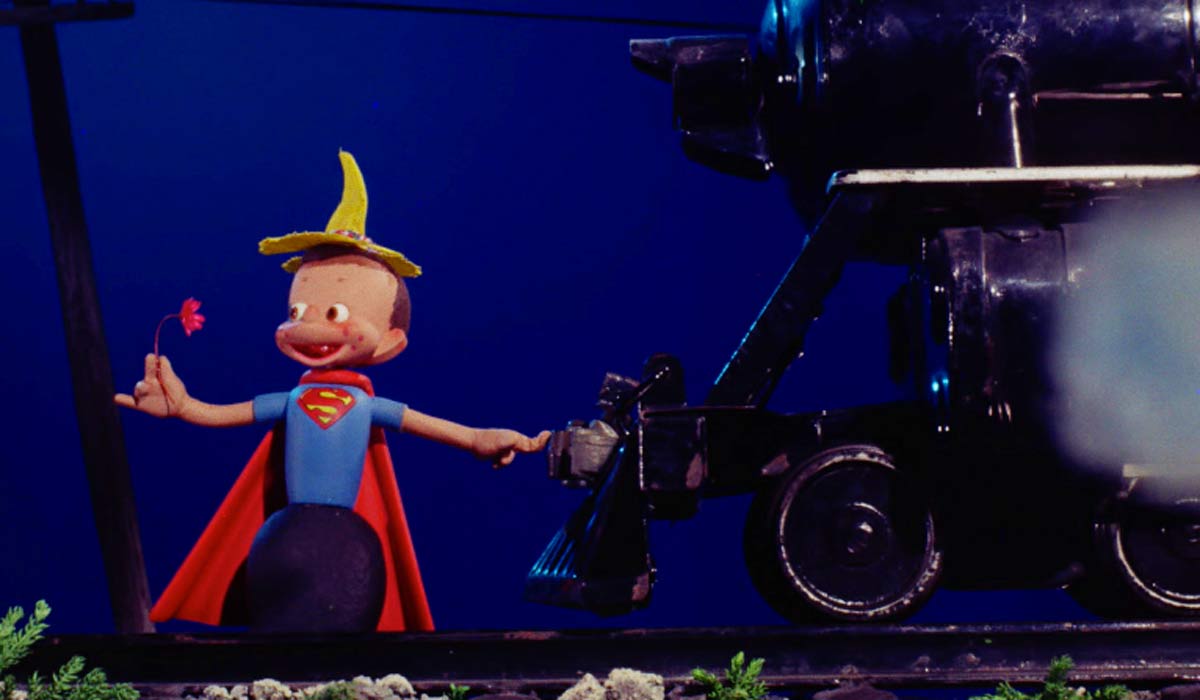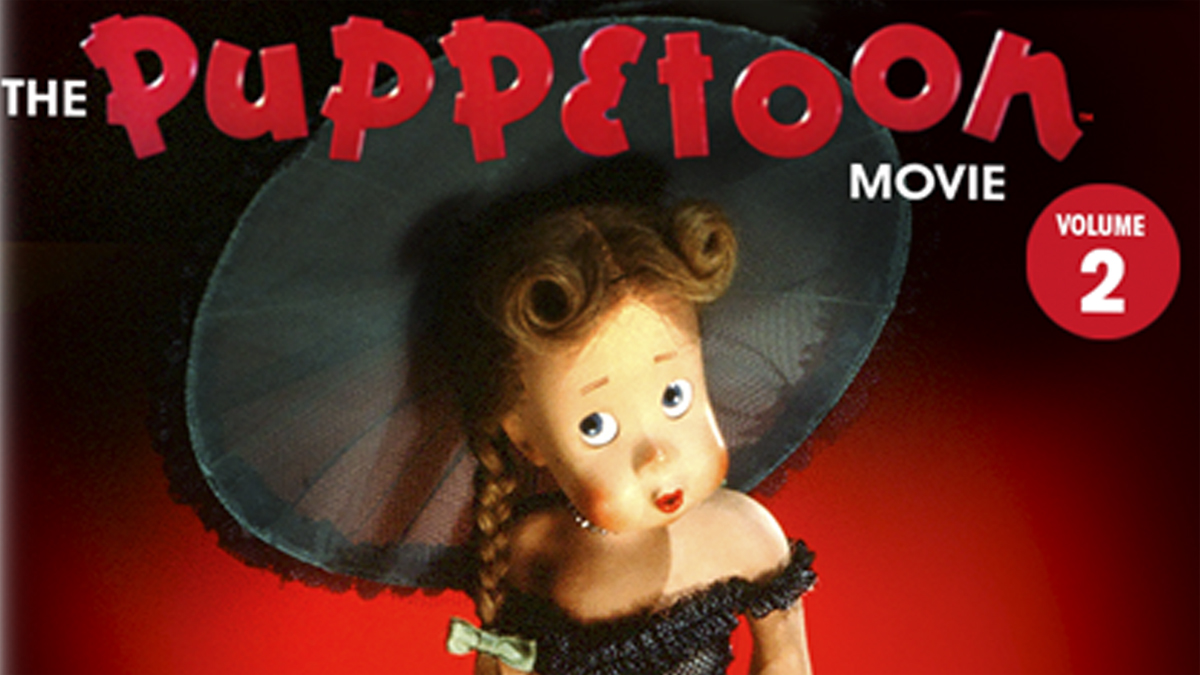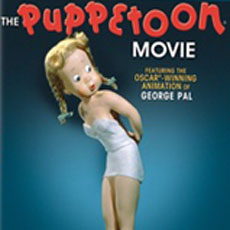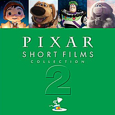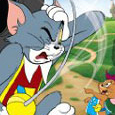Paramount Pictures and Others/Leibovit Productions (1934-1946), Puppetoon.net Exclusive (December 2, 2020), 1 Blu-ray + 1 DVD, 186 mins, 4:3 ratio, Dolby Digital Dual Mono, Not Rated, Retail: $39.95
Storyboard:
This compilation grants us a second volume of amazing stop-motion shorts from Hollywood legend George Pal, including some rarities representing his earlier European works.
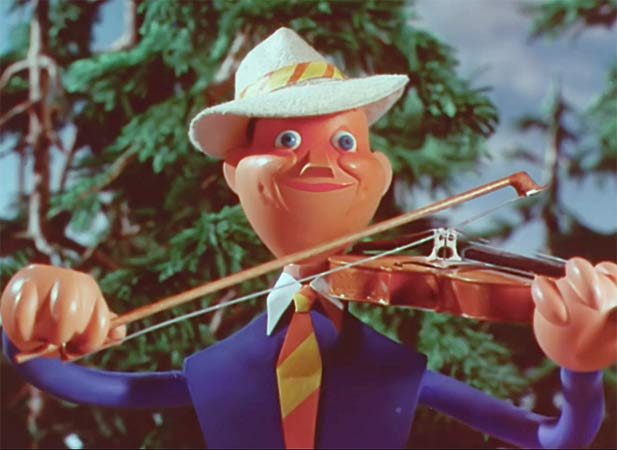
The Sweatbox Review:
The Blu-ray release of The Puppetoon Movie was Animated Views’ Best Release Of The Year back in 2013. With so many studios frustratingly sitting on their classic animation output, it was wonderful to see not only the 1987 compilation film, but also many additional amazing shorts (plus extras) being made available for viewing after years of – to be frank – unfair obscurity. Now, just as with that 2013 disc, we can give thanks to producer Arnold Leibovit for bringing to us many more of the stop-motion masterpieces in stunning high definition.
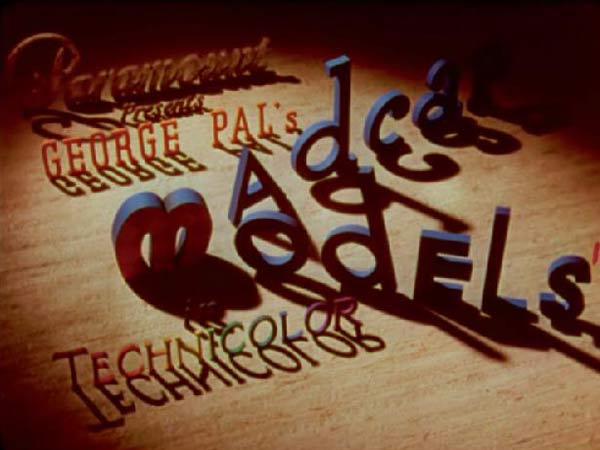
When Leibovit first announced the Volume 2 project a couple of years ago, I was personally extremely excited, and I began a correspondence with Arnie that led to me helping him in a small way behind the scenes on the release. Naturally, I am inclined to gush over the disc he has produced, but I am confident that the praise is all well-earned regardless. For some background on this release, and Arnie’s history with George Pal, I refer you to the interview we did in the summer of 2019.

Filmmaker George Pal would eventually produce or direct such film classics as The Time Machine, The War Of The Words, Destination Moon, and The Wonderful World Of The Brothers Grimm; but the first time that he imbued many childhoods with wondrous images of fantasy, it was in the 1930s and 1940s with the beloved Puppetoons – produced first in his native Europe, and then in the United States for Paramount. He also did a number of advertising films for clients such as Philips and Horlicks. His shorts utilized the puppet replacement technique of stop-motion animation, using hundreds of little carved wooden puppets in a single film. The extraordinary result is still thrilling to see, even now, with the wooden characters dancing, swinging, and otherwise cavorting… not to mention fighting, celebrating, and falling in love. Like the best stop-motion masters, Pal and his technicians also utilized music, color, lighting, and special visual effects in pleasurable ways to enhance each story. Contemporaries such as new-found friends Walt Disney and Walter Lantz were captivated, as were audiences the world over.
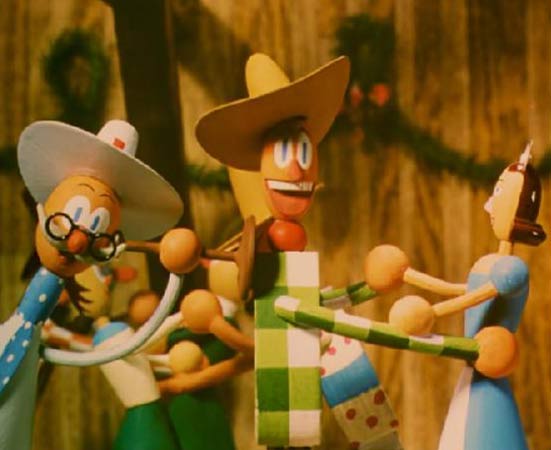
The first Puppetoon Movie used bridging sequences to introduce the audience to Pal and his creations, while this second volume is strictly a shorts compilation. While I would have enjoyed seeing Gumby come back with Arnie the Dinosaur for this go-around, just having another collection of the shorts themselves seems miracle enough. Leibovit was granted access to numerous sources, including Paramount’s own three-strip Technicolor successive negatives, and – most astoundingly – newly-found material from Europe. The British Film Institute also pitched in. Leibovit was also thrilled to be contacted by a collector just before the Volume 2 project launched, only to be informed that the collector had a nitrate print of the once-thought lost film Wilbur The Lion.

Previous restoration work of some of the Paramount elements had been done at UCLA, and new work was commissioned to other helpers such as Steve Stanchfield and his crew at Thunderbean Animation, who performed an immense amount of much-appreciated work for the project. Additionally, ASIFA paid to restore A Hatful Of Dreams and Jasper Goes Hunting, two of this set’s most anticipated films.
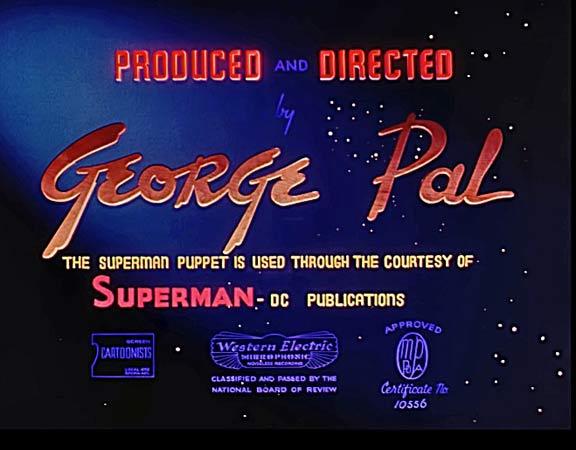
The resulting disc has no fewer than eighteen high-definition short films, plus surprising extras. The eighteen films include mostly Paramount subjects, under the Madcap Models banner, with a few rare European films inserted into the program. The disc opens with a disclaimer about the nature of the Jasper cartoons, featuring as they do the depiction of a caricatured little black boy. Hopefully, viewers will realize that there was never any intent to offend anyone in the audience. Such depictions, while now viewed as wrong, were commonplace at the time that these films were produced. And, as such things go, the depiction of Jasper is otherwise quite positive, with Jasper being a delightful, honest, and adventurous boy.
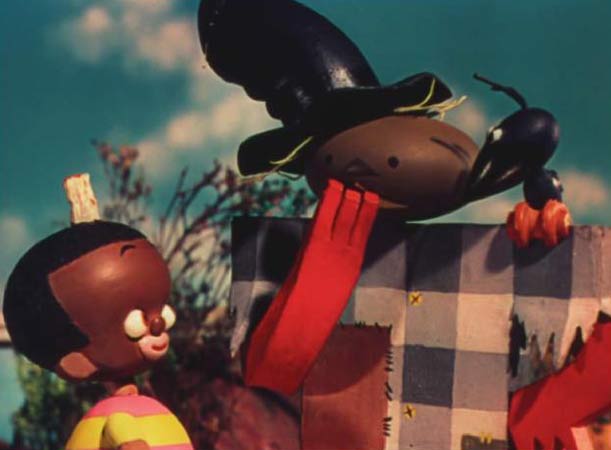
For reasons unclear to me, the main menu offers selections of Puppetoons “A” and “B”; the cartoon selection for each menu seems random. Each subgroup gets its own “Play All” choice. One is unable to “chapter skip” to the next cartoon on the Blu-ray, unless going back out to a menu. (The DVD, however, still allows chapter skipping.) Scanning ahead at increased speed is no problem.
Puppetoons A
Dipsy Gipsy (1940, 8:48) (Note: “Gipsy” is the spelling on the title card, but it is spelled with the alternate “Gypsy” in the menu, as well as in most listings of the short in the public record.) – The happy-go-lucky recurring character Jim Dandy is singing in the forest, as he is prone to doing. He spots a gipsy girl and instantly falls in love, and he decides to propose. She is smitten as well, but before they can get together, Jim must sneak into the gipsy village and convince her father that he is gipsy material. He manages to do so, primarily through some fancy fiddling. This is a very fun, energizing short with great music and a large group of background players.
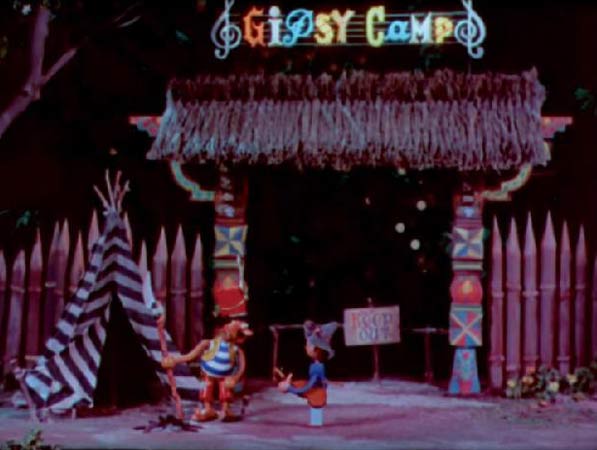
Radio Valve Revolution (1934, 4:21) – This is a real prize on the set, being a rare Philips advertising short done in hand-drawn animation. Despite the absence of wooden puppets, it has the same Pal charm. Treats like this make the disc all the more special. Worn out radio tubes celebrate the arrival of newer ones to take over their jobs so that they can retire.
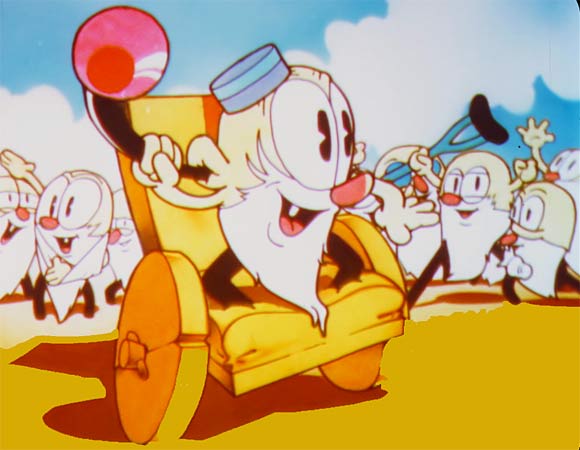
Ali Baba And The Forty Thieves (1935, 11:09) – The booklet that comes with this set proclaims this short as “an amazing archival find,” and indeed fans should be thrilled to see this rare film. The French print has the French language titles and credits subtitled, but the film plays out in English. Here, the short is presented as one of “George Pal’s Dolly Follies.” The puppets are a little more primitive in this early effort, but there is still a surprising amount of sensuality and action.
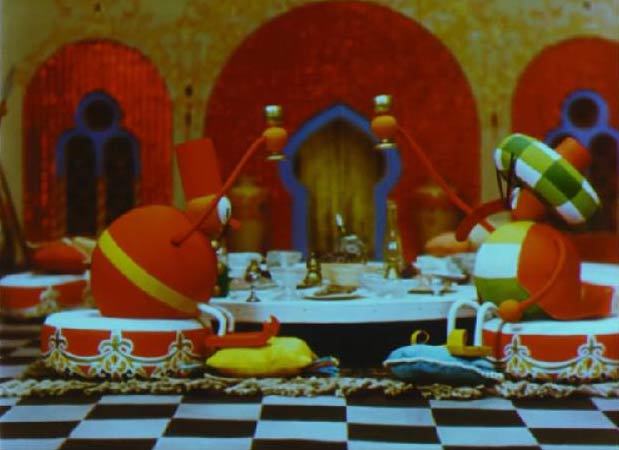
A Hatful Of Dreams (1944, 9:43) – Most will find this cartoon particularly notable because it features a character turning into Superman, under authorized use from DC Publications. (Superman’s own cartoons, of course, were being distributed by Paramount until 1943.) It was also the first Puppetoon to feature Pal characters Punchy and Judy. (Character design here was by Fred Moore; fans of the Disney artist will recognize Judy as an obvious example of a “Freddie Moore girl,” also visualized as the “centaurettes” in the “Pastoral Symphony” section of Fantasia.)

Punchy falls in love with lovely Judy, and tries to impress her through the use of a magic hat – a hat that allows him to turn into Superman! However, his antics bring him afoul of the law, and he ends up in court. Not to worry, though – he still wins the girl! While the appearance of Superman is certainly notable, I was most amazed by Judy’s animation, which sees her chest heaving while breathing in and out near the beginning of the cartoon. It is attention to detail like this that makes these cartoons so amazing.
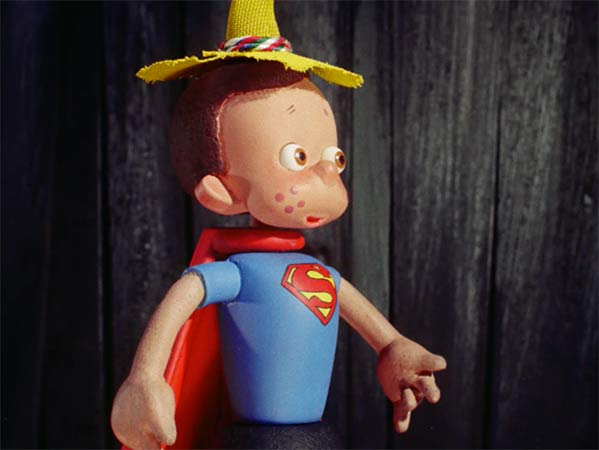
Rescue Brigade (1937, 5:48) – This Dutch advertising film (given English subtitles) presents numerous episodes of life, showing the virtues of owning a telephone in order to make life more convenient. Housewives, parents, and store owners all agree that having a phone is peachy! The short ends with a closing message that says, “Neem Telefoon” – or, “Get Phone!”

In Lamp Light Land (1935, 3:33) – While this is another Philips advertisement, this time for light bulbs, it is quite delightful. It begins with a cel-animated sequence, and ends with Puppetoons.

Jasper And The Choo Choo (1942, 7:27) – Jasper’s friendly nemesis, Professor Scarecrow, tempts him to gamble. This brilliantly surreal adventure sees giant dice form trains, and Jasper finds himself in a pinball machine. The fantasy sequence in this short is one of the top joys on the set.
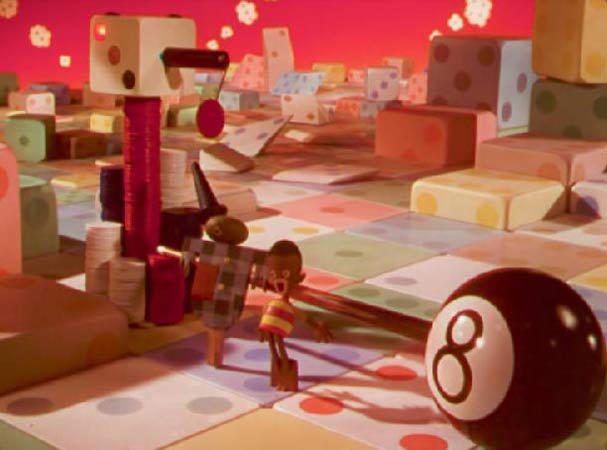
Love On The Range (1938, 6:20) – Cowboy Bill gets the cold shoulder from Susie, who soon finds herself victimized by a much less savory fellow in this musical adventure. It turns out that what Bill needs to save her and win her heart is to drink that wonder tonic, Horlicks! Yes, it’s another ad, but it comes nicely disguised as a tremendously fun and energetic story, inspired by classic silent film melodramas – complete with mustachioed villain.
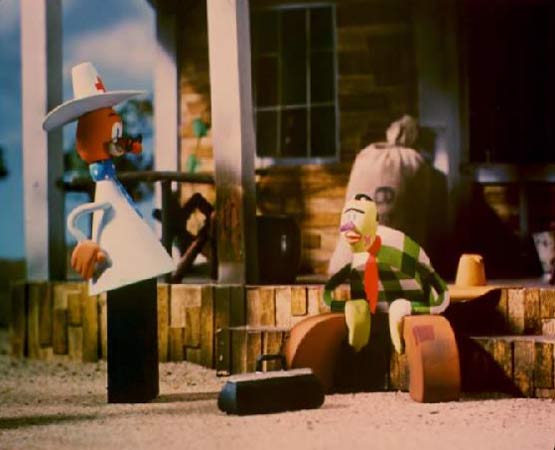
The Gay Knighties (1941, 9:26) – Jim Dandy tells the tale of his ancestor, who saved a kingdom from a goofy music-loving giant, and thereby won the heart of a princess. To me, the giant here is a clear ancestor to the Abominable Snowman in Rankin-Bass’s Rudolph Christmas special – further evidence of Pal’s influence on future animators.
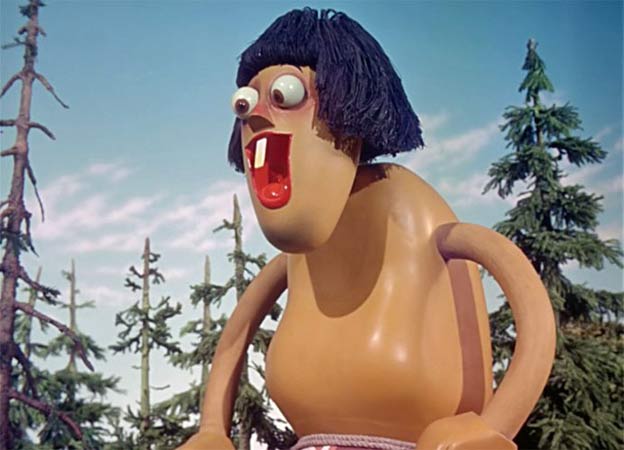
Puppetoons B
Two Gun Rusty (1944, 8:27) – Little red-haired Rusty imagines being a cowboy. Charmingly, everyone in his fantasy looks like him. The Rusty cartoons are simpler in some respects, but capture a certain lovely innocence.
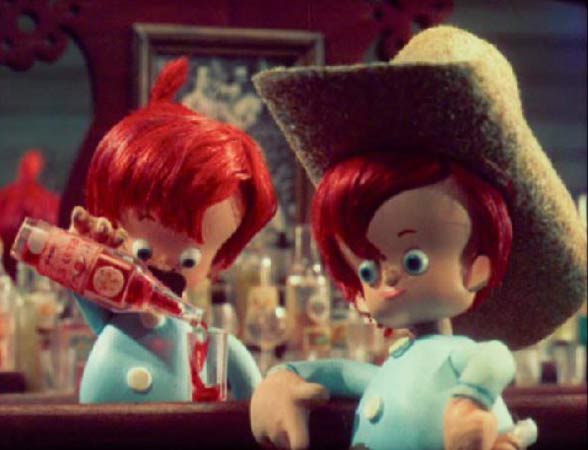
How An Advertising Poster Came About (1938, (4:52) – This print is from the Netherlands Film Museum. The black and white film is a real novelty, combining live action, hand-drawn animation (with a nod to Fleischer’s Out Of The Inkwell cartoons), and stop-motion puppets to tell what could otherwise be a dull tale of the making of an ad poster.
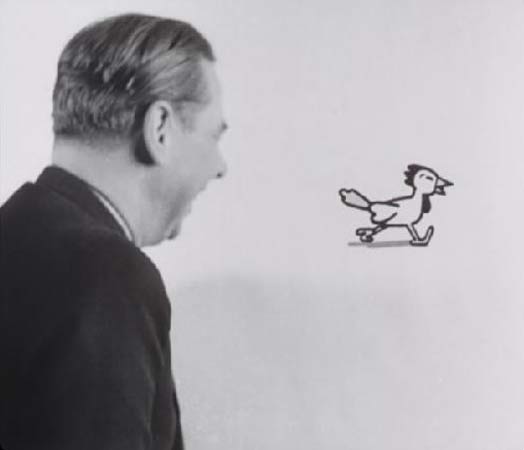
Jasper Goes Hunting (1944, 7:19) – Jasper once again gets into shenanigans with Professor Scarecrow. Cartoon buffs will be thrilled to see Bugs Bunny here, voiced by Mel Blanc and courtesy of Leon Schlesinger Productions, though the appearance is brief. Fortunately, this short has much more going for it, telling another fanciful tale with particularly colorful African jungle sets.

Sky Pirates (1938, 6:47) – This is a British print (in Technicolor), of what turns out to be another Horlicks commercial. As usual, though, Pal’s focus is on an engaging and entertaining story, here about an air squadron that must find the energy to win an aerial battle. The astounding anthropomorphizing of the planes (as they gallop down the airfield and dodge bullets in the sky) has to be seen in action to really appreciate the brilliance of the animation. The planes actually squash and stretch, accomplished through the crafting of numerous wooden figures. This is one of the coolest cartoons Pal ever produced, in a very long list of cool cartoons.
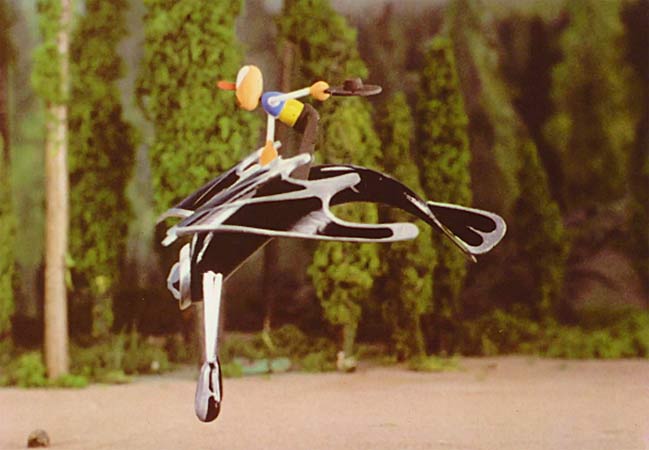
Jasper’s Close Shave (1945, 7:15) – Bugs Bunny and Woody Woodpecker were not the only ones to use the music of The Barber Of Seville to excellent effect in a cartoon! Jasper gets another delightfully surreal outing, as Professor Scarecrow attempts to get Jasper’s coins in exchange for a shave and a haircut.

The Ship Of The Ether (1934, 7:23) – This is the sole short on this set that originally appeared on the first Puppetoon Movie Blu-ray, but that time it was only in the bonus section of the disc, and shown then in standard definition. Here, the Dutch film is a fully restored HD version. A glass ship’s fanciful journey through the airwaves is set to music. Philips gets subtle on-screen plugs, and finally a larger notice about their radio sets.
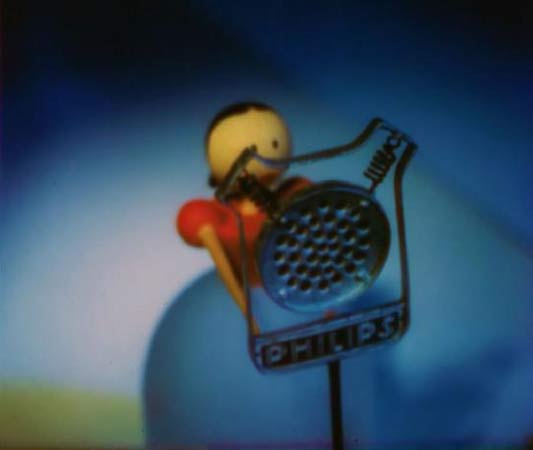
Good Night Rusty (1943, 7:29) – Rusty decides to snatch his dad’s cigars, but in return gets a fever dream of a lesson in why not to smoke. This short has generally simple sets, but brilliant use of color and special effects.

Wilbur The Lion (194, 9:13) – As mentioned earlier, this film had been thought lost for decades, until a collector contacted Leibovit and told him that he had a nitrate print. A circus lion retires to the jungle, but finds he misses the comforts of the circus. It is a bittersweet story of how one’s life takes one into new worlds, and how difficult it can be to return to one’s roots.
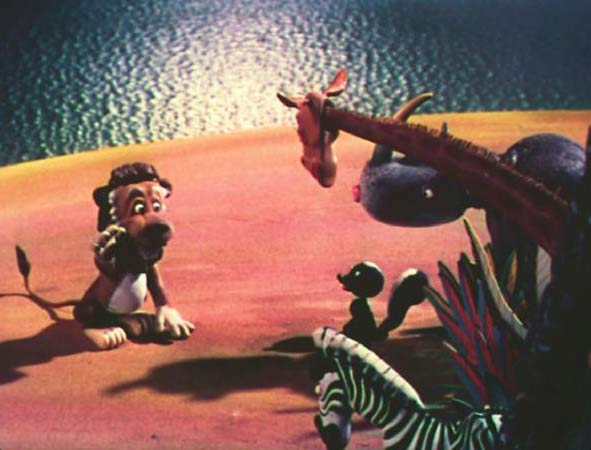
Jasper Tell (1944, 8:09) – It’s likely no surprise that this film’s music features Rossini’s William Tell Overture, and that Jasper stars as the son who stands in front of his father with an apple on his head. The tale is told in the context of Professor Scarecrow trying to get Jasper’s apple, but he’s in for a surprise.

Wow, what a wonderful selection of animated shorts. The ingenuity, skill, and precision evidenced in these films is really quite extraordinary. There is really nothing else quite like the Puppetoons, brimming as they are with colour, music, and genius.
Is This Thing Loaded?
This Is Oil, No. 1: Prospecting For Petroleum (21:59) was filmed in Technicolor by producer Pal in collaboration with the Shell Oil Company. It uses miniatures and puppet animation to convincingly make the case for how important oil is to our lives, and teaches us where oil comes from. This film appears here in standard definition only.

I have viewed Trailers From Hell: Arnold Leibovit On The Puppetoon Movie (4:48) and Trailers From Hell: Arnold Leibovit On The Fantasy Film Worlds Of George Pal (4:58) on YouTube already, but it is nice to see them archived here.
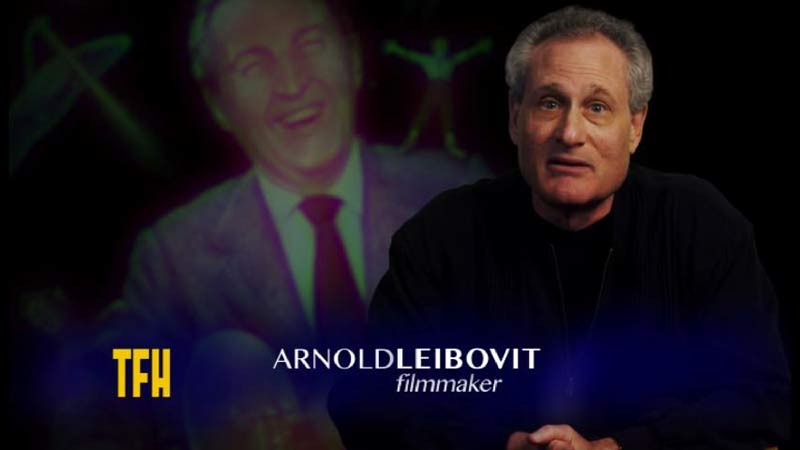
The Puppetoon Movie Speedy Alka-Selzer (4:47) is a nifty behind-the-scenes look at how Speedy was animated for the bridging sequences in the first Puppetoon feature. (Standard definition.)
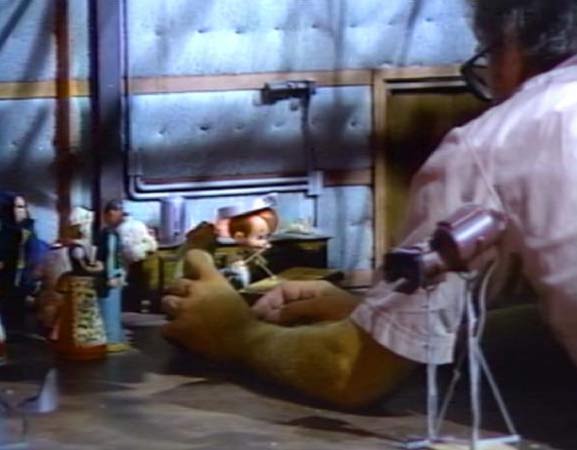
The Puppetoon Movie Montage (10:51) is actually a montage of fascinating rare photos of George Pal, spotlighting the creaton of his films, along with assorted clips from shorts that are found in both Puppetoon movies.
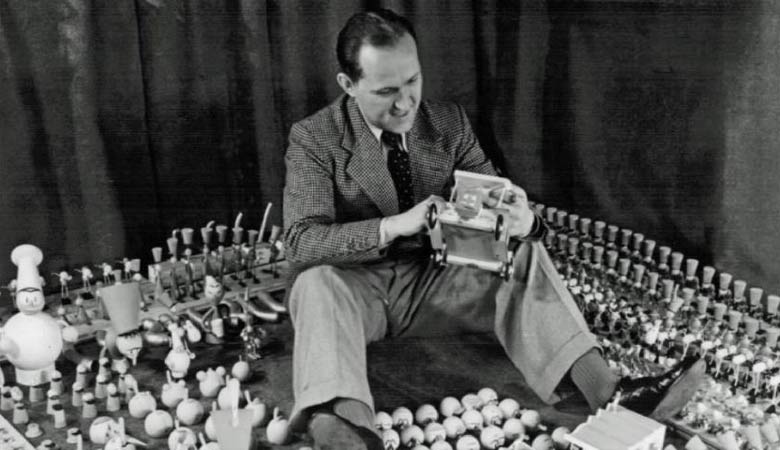
Full Production And Donor Credits (5:41).
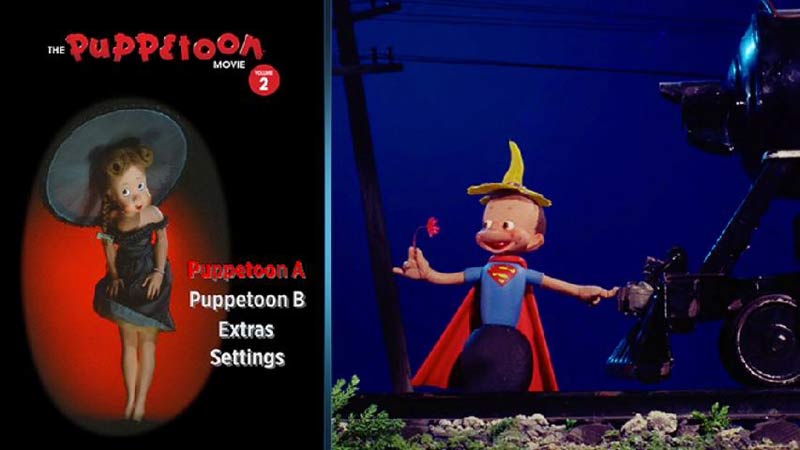
Case Study:
Standard Blu-ray case, with the DVD sitting opposite the Blu-ray. An informative fold-out booklet helpfully provides information on George Pal and all the films from the set.
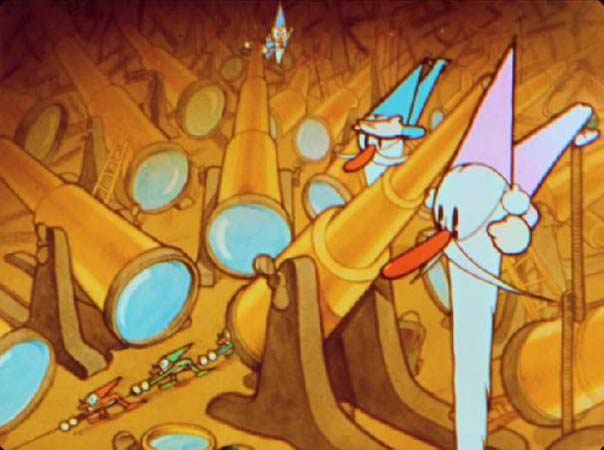
Ink And Paint:
All of the films in the main program were transferred from 35mm materials. The Paramount and Horlicks films were shot in Technicolor, while the older European films were in the less vibrant Gasparcolor (obviously, the exception is the black and white Advertising Poster short). I have taken some of my screen captures off of the DVD for convenience, while Leibovit also provided me with high definition images to use. So, if any of the images here look less sharp or detailed, they are likely from the DVD.
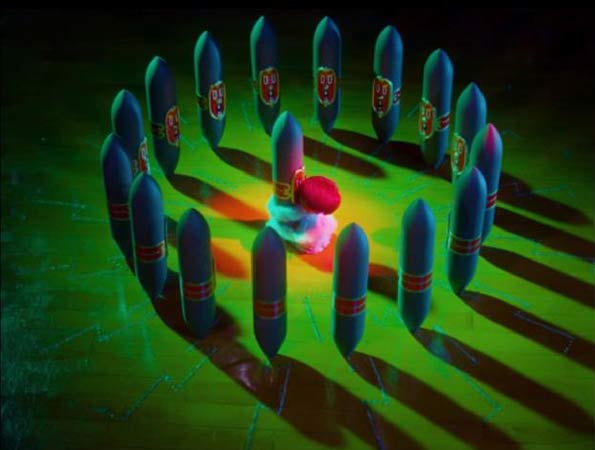
The restorations overall are quite stunning. Some of the films do show their age, naturally, being over 70 years old; but everyone should be immensely satisfied, all things considered. The prize ASIFA-funded restorations look particularly sharp. The image, on all the Paramount shorts especially, is extremely clean, practically free from dirt or scratches, except in a rare instance or two. The Technicolor shorts naturally are also the most brilliant, and – by virtue of being primarily from original negatives – they look the sharpest as well. The age of the materials, and perhaps the filming techniques, means that some shots look a wee bit soft; and sometimes details get lost in the blacks, which is most true in Wilbur, which was transferred from a nitrate print. The European shorts do look more worn, generally (and even Ship Of The Ether is still quite soft, despite the new HD transfer), but their rarity makes one able to forgive that easily enough.
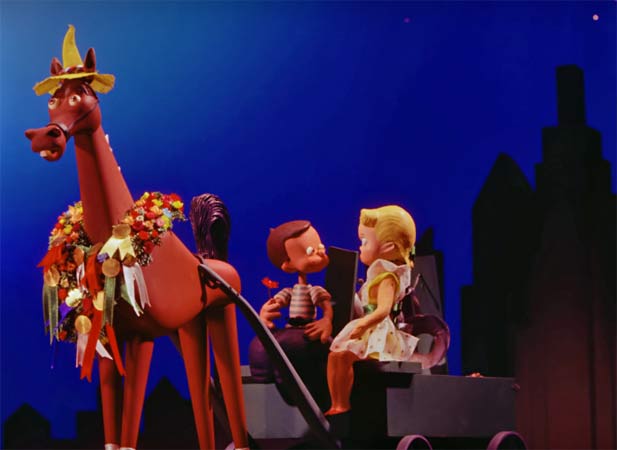
Caveats aside, the general impression is certainly that of a triumph of film preservation and restoration.
Scratch Tracks:
The Dolby Digital 2.0 Mono sounds just about perfect, free from hiss or distortion. Lossy tracks were used in an effort to maximize the bit rate for the video, and I approve of the choice. Again, slight imperfections can show up on the older European shorts, but there are no strong complaints to be had at all.
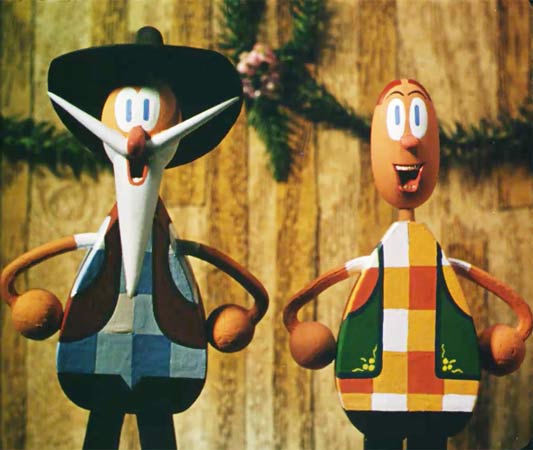
The menu offers subtitles, but there are actually none to be had for the majority of the films. The only films that get English subtitles are the foreign-language films.
Final Cut:
This Blu-ray + DVD set has been years in the making, and it was worth the wait. The Puppetoon shorts are an absolute joy, and being able to see them looking so beautifully restored is a privilege. You really cannot fully judge these films by the screen captures shown in the review; the real magic is in the animation, and it is incredible. Arnie Leibovit has once again honored the memory of his friend and idol, George Pal. We look forward with great anticipation to a third volume!
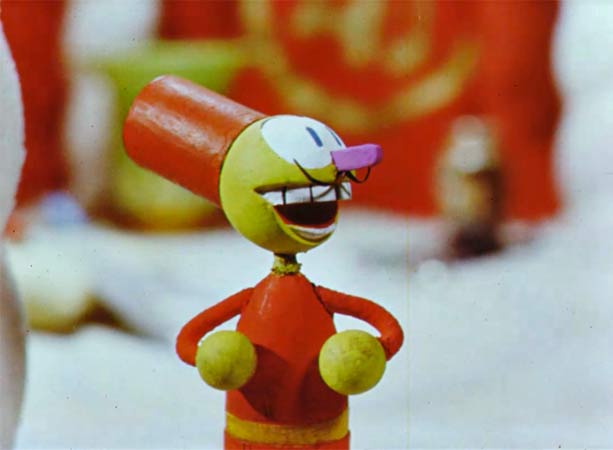
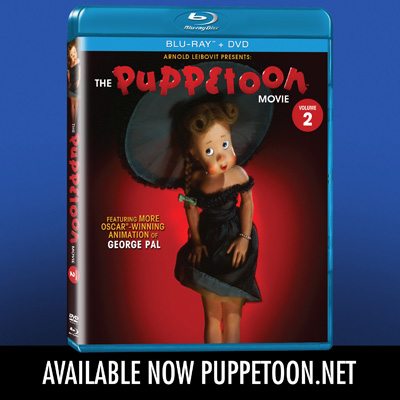
 |


